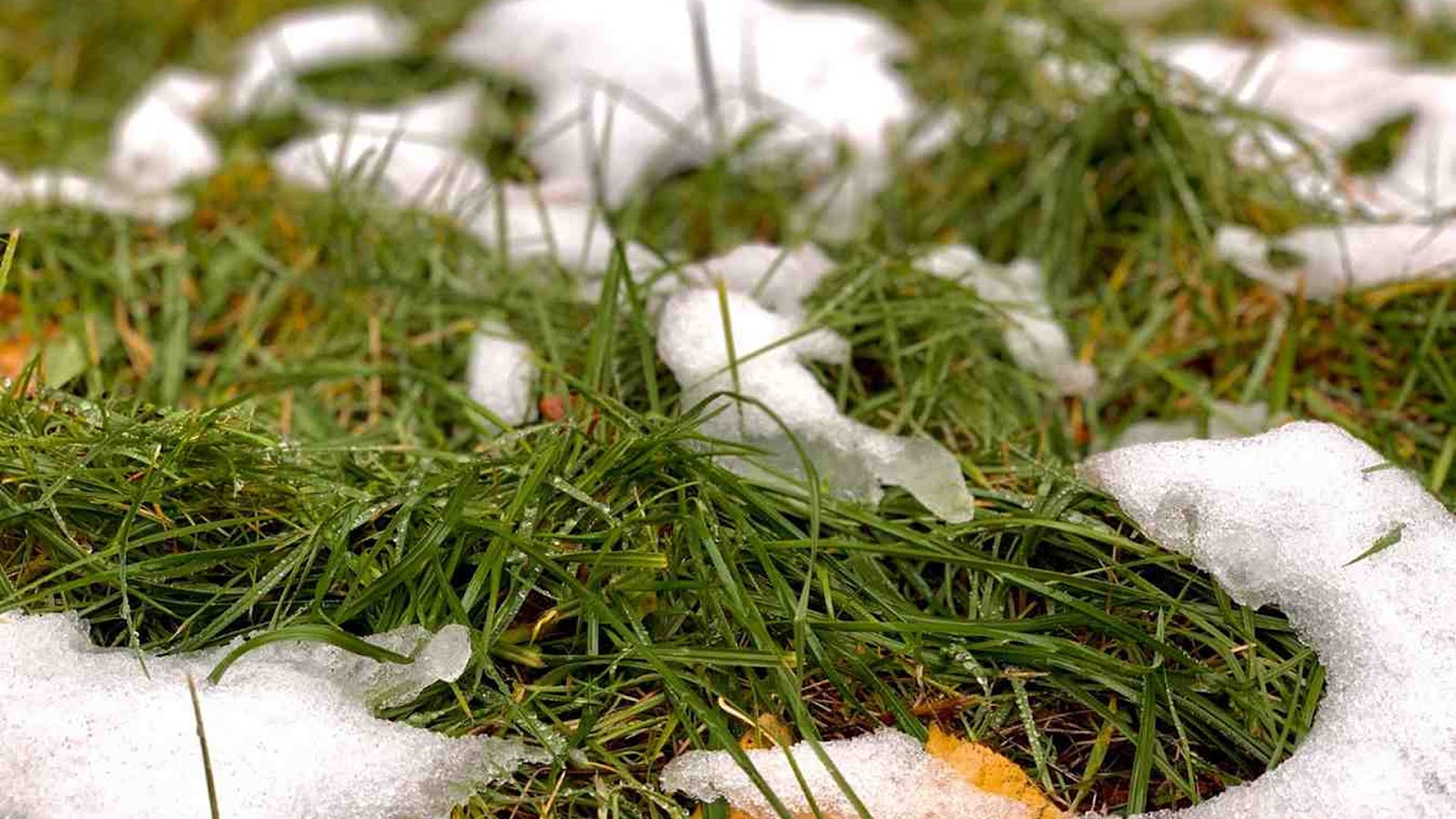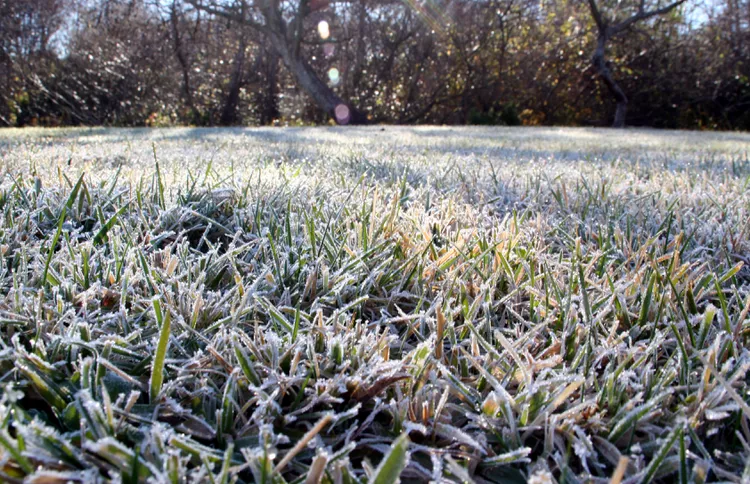Ways to Protect Your Lawn From Salt Damage During Winter
Last Updated on September 25, 2025 by Duncan
Winter deicing attempts can harm your lawn, since rock salt and other ice melting solutions frequently drain into the soil, harming grass and disturbing its growth. Due to this, you should work on protecting your grass from this form of damage.
How does salt damage your lawn?
Salt from de-icing chemicals can wreak havoc on your lawn, particularly when the salt components accumulate in the soil. This brings about a number of effects such as;
Dehydrates the grass
Salt in the soil draws moisture from the grass blades and roots by osmosis, causing dehydration and drying. It causes the grass to wither and die through “physiological drought,” even when there is enough water in the soil.
Toxicity issues
Grass does not require salt or chloride for growth or other metabolic processes. So, once in the soil, they can quickly accumulate to hazardous levels in the grass, bringing detrimental consequences. They can also harm the lawn’s roots, reducing its ability to absorb water and nutrients.
Nutritional deficiencies
Excess sodium competes with other ions for attachment sites on soil particles, including magnesium and calcium. When sodium substitutes these cations, they become less available for plant uptake, resulting in nutritional shortages.
Reduces plant defenses
Excess salt produces stress in your grass. A stressed grass is unable to resist diseases and insects, and it is less tolerant of drought and heat.
You can tell you have salt damage in your lawn by having brown or discolored grass, obvious patches of dead or thinning turf, delayed spring green-up, a wilted or dry appearance, and white crusty residue on the soil surface.
These signs are typically more visible around the borders of sidewalks, driveways, and roadways, where salt collects when snow melts and runs off of them.
How can you prevent salt damage on your lawn?
There are several strategies you can use to protect your lawn from salt damage, including:
Use safer alternatives.
One of the best ways to protect your lawn from salt damage is to use items that are less hazardous to plants than the conventional rock salt, which contains sodium chloride.
Alternative deicers may be more expensive, but you will save money fixing your grass next spring.
Calcium chloride, potassium chloride, and magnesium chloride are among the most common options you should go for. You can also use sand or other abrasive materials such as kitty litter for salt, or mix salt with them instead of using a straight deicer.
You can also use a concrete-based, pet-friendly ice melt. It contains no salt, chlorine, or acetate, therefore it is safe for the environment, your puppy, and the grass and flowerbed next to the driveway and sidewalk.
If you’re laying new concrete, consider heated driveway and sidewalk alternatives. They usually use electric coils or a boiler system to circulate a mixture of hot water and propylene glycol through subterranean pipes. The device heats the pavement and melts the snow.
Minimize your salt usage
You need to apply rock salt or deicers sparingly, avoiding over application. While a little is fine, too much isn’t always preferable.
Rather than salting the entire driveway or sidewalk, focus on specific patches of ice.
Use around a handful of product per square yard, no more.
Use a handheld or push spreader to evenly apply salt on surfaces. Using it this way reduces waste.
When the temperature is too low, avoid salting. Traditional rock salt (sodium chloride) is generally ineffective when temperatures fall below 15 to 20 degrees Fahrenheit.
Shovel or use a snowblower early and frequently during a storm to keep snow from compacting into ice. The less ice that forms, the less salt you will use.
You should try as much as possible to keep ice off your driveway by shoveling while it is still snowing or as soon as it stops.
Create physical barriers
To put up a barrier between concrete and green areas, use landscaping rocks or gravel. If space allows, you should also place salt-tolerant hedges or evergreen bushes between the concrete and the lawn.
Any salty water that runs off into these areas will soak into the soil in the barrier strip, reducing the detrimental effects of salt on your grass.
You can also use burlap or snow fence around the borders of driveways and roadways to help prevent salt spray.
Protect your soil
This calls for you to apply a thin layer of mulch or finished compost to the lawn along the margins of your driveway or walkway, using 2 to 3 inches of mulch and 1/4 to 1/2 inch of compost.
This covering of organic material will help to “trap” the salt rather than allowing it to drain down into the soil and perhaps harm the grass.
When spring arrives, you can rake it up and dispose of it, or use it in areas where salt damage is not an issue.
Flush the ground regularly
When the ground is not frozen, use a garden hose to remove as much salt as possible from the soil in the root zone. Turn on a setting akin to a rain shower or a shower head to distribute water in a natural pattern with minimal effort.
The water will drive sodium in the soil deeper into the ground, where your lawn’s roots cannot reach it.
You should note that this stage requires a lot of water. This calls for you to water the entire area until water pools on the dirt. Allow it to soak in, then repeat three or four times.
Apply gypsum
Gypsum, or calcium sulfate, is the most effective soil addition for “knocking” salt from soil particles and organic materials. The calcium in gypsum replaces the sodium on soil particles, allowing the sodium to combine with the sulfate and produce sodium sulfate.
Sodium sulfate quickly dissolves in soil solution and can be easily flushed or leached from the root zone.
For the best outcome, apply it at a rate of 20-40 pounds per 100 square feet of soil. After application, rinse the soil with plenty of water to remove the sodium sulfate from the root zone.
The calcium in gypsum displaces salt residues, reducing the uptake of harmful salts through the plant root zone.
For optimal results, use pelletized gypsum in your lawn spreader and make two runs (full open rate) around street curbs, driveways, walkways, or anywhere an ice melter will be used frequently during winter.
Go with salt tolerant grass varieties
Depending on where you live, choose grass types that are more salt resistant. If you must apply salt, a salt-tolerant grass will suffer less damage.
Perennial ryegrass, tall fescue, and creeping red fescue are the most salt-tolerant cool-season grasses for northern areas. They have modest salt tolerance, which is inferior to some warm-season turfs but superior to Kentucky bluegrass.
Salt-tolerant warm-season grasses include seashore paspalum, Bermudagrass, and St. Augustinegrass. These grasses thrive in the South (where snow is uncommon), but you can also find them in some transition zone areas with cooler winter temperatures and snow.
If you want salt-tolerant alternatives to grass, consider American holly, bearberry, cotoneaster, English yew, false cypress, and littleleaf boxwood. Their capacity to survive saline environments (i.e., salt) makes them ideal for planting in strips between your driveway, sidewalk, and lawn.
FAQs
Will grass grow back after salt damage?
Whether or not grass grows back is pegged on the intensity of the salt damage and the type of grass. If there is only slight damage, your grass will most likely grow back.
Grass recovers more slowly after serious damage, especially if the lawn was exposed to high levels of salt toxicity. Grasses that are not salt tolerant have a tougher time recovering.
Removing as much leftover salt from the soil as possible is the most effective strategy to promote soil health and boost grass growth.
Why are some grass varieties more salt-tolerant than others?
Some grasses able to endure salty circumstances because of physiological and structural modifications that enable them overcome the difficulties of excessive salinity. Certain grass types can actively prevent salt from entering their roots.
Some species’ leaves contain specialized glands that remove salt, preventing harmful accumulation in the tissues. Some plants even contain storage chambers called vacuoles where they can store salts to maintain their cytoplasm free of harmful ions.
Parting shot
As much as you have to use salt on your lawn, it doesn’t mean that you have to cause damage to your grass as there are a number of things you can do to avoid this.
If you notice irreversible damage to your lawn in spring, consider hiring a local professional to fix it. The experts will help you address barren spots by overseeding with salt-tolerant grasses or adding French drains to keep your lawn looking great.


